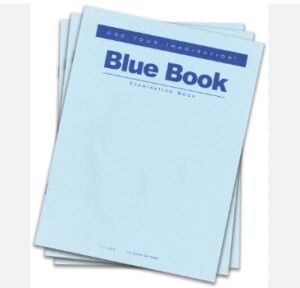 |
| It is the mid-point of the semester; an important time to gather student feedback. The feedback can help you make minor adjustments. It can also help you know you need to explain why certain things are structured the way they are. If you have a feedback form already, awesome! If not, there are plenty of examples available in this post from the TTT archive. |
Teaching Tips
Articles and resources to empower your teaching experience.
Teaching: Hope for the Best, Plan for the Worst
 |
| As a math instructor, I face many challenges in my classroom– math anxiety, dislike of math, and disparities in preparation. Typically, the “outside” world rarely infiltrates our discussions. However, everything changed on November 9, 2016, when student reactions to the election blindsided me. I was unprepared, and it did not go well.
I know many of you are more informed and better prepared to handle such issues, and for that, I am grateful. |
Teaching: Student Mental Health Part II
 |
| Recently, I shared an article by Mays Imad that explored the challenges our students are facing, how struggle is natural, and how we can help them develop resilience. In this second installment, she digs deeper into the biological underpinnings of stress and resilience, sharing a systemic approach to resilience from Michael Ungar that she applies with her students. |
Teaching: Blue Books

Caught in the Act is a new bi-weekly column where Denison faculty share something cool that their humble colleague does with their classes. This week, Andrea Lourie, by way of May Mei, caught Matt Jungers in the act of a cool teaching practice.
Beyond the formal assessments, Matt has implemented a more informal method to monitor his students’ progress and well-being: the use of Blue Books.
Teaching: Creating Classroom Cultures
 |
| Here is a quick look at some of the things discussed at our Teaching Matters session on Creating Classroom Cultures:
Do you know what kind of culture works for your teaching style and learning goals? Erin Henshaw explained how she strives to create a warm, welcoming environment. Meanwhile, Heather Poole and Heather Rhodes both shared their strategies for getting students to co-create “dynamic” and “motivated” classroom communities. |
Teaching: Being Human Together
 |
| During the Spring 2020 semester, I audited Ali Miller’s Intro to Stats course. She kicked off the first day with an activity she called “Being Human Together.” She introduced herself through a series of fun facts and then invited her students to do the same through an in-class survey. One of the questions asked for their “favorite musical artist.” |
Teaching: We Can Help Students Think
 |
| In this article, John Warner, author of Why They Can’t Write, ruminates on what it means to think and what it means to teach students to think in the age of AI. He usefully points out that students have always turned to strategies and tools to help them think or to help them avoid thinking. |
Teaching: The Thumb Swipe Distraction
 |
| “Are you smiling at your crotch?” This playful question is the final code in a series my students and I have developed to tactfully highlight when smartphones are distracting us. We collectively agreed on this humorous approach to maintaining focus in the classroom (full details below).
Now that the initial “honeymoon” phase of the first few weeks has passed, how has smartphone use been in your classes? |
Writing as Thinking vs. AI as Thinking
 |
| Alexis Hart, English Professor and Director of Writing at Allegheny College, shared this writing activity at the GLCA AI workshop in August:
According to writing professor and author of Why They Can’t Write, John Warner, “Writing is thinking” because “the basic…unit of writing” is the idea (144-145, emphasis added). However, in May 2023, a student at Columbia University, Owen Kichizo Terry, wrote an article in the The Chronicle of Higher Education claiming that when college students are given an essay assignment “it’s very easy to use AI to do the lion’s share of the thinking” and therefore, “writing is no longer much of an exercise in thinking.” |
Teaching: Student Mental Health
 |
| In a previous post, I shared insights from Bonni Stachowiak, host of the “Teaching in Higher Ed” podcast. As featured in the Chronicle, she highlighted a mental health crisis as one of the three significant changes in higher education. This week, I’d like to dive deeper into her concerns.
The Chronicle article, ‘Why Students Can’t Work on Their Own,’ addresses what many faculty members are likely already experiencing: a significant decline in students’ ability to complete substantial independent work since the pandemic. |
